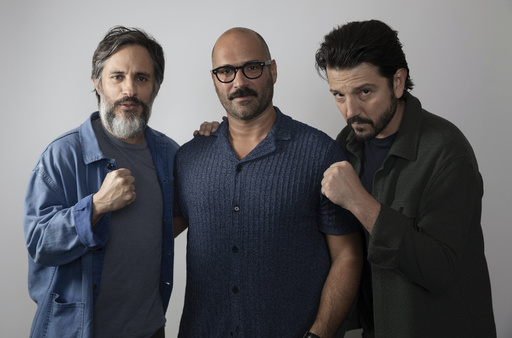WEST HOLLYWOOD, Calif. — Diego Luna and Gael García Bernal are well-respected actors in their own right, but their collaboration is truly formidable, especially since their initial pairing in Alfonso Cuarón’s 2001 film “Y tu mamá también.”
In their latest endeavor, they come together again for Hulu’s inaugural Spanish-language series, “La Máquina,” which has just launched. This reunion occurs a decade after their shared performance in the 2012 comedy “Casa de Mi Padre.”
During the series’ premiere in Los Angeles, Luna expressed the comfort and familiarity he finds while working with García Bernal. “Working with Gael is like returning to something familiar, something that has always been there for us,” he shared. “We’ve established and maintained this bond with great ease.”
The narrative of “La Máquina” centers on an aging boxer, portrayed by García Bernal, who is given one last opportunity to make a comeback thanks to his manager and close friend, played by Luna. However, their chance at victory is complicated by enigmatic forces threatening both the fight and their lives. The series is a product of Searchlight Television and the actors’ production company, El Corriente de Golfo.
Showrunner Marco Ramirez noted the chemistry between the leading actors was so dynamic that he found himself often rewriting scripted dialogue to capture their playful interactions. “They seem to be destined to work together and to improvise with each other,” Ramirez commented. “While the script had its merits, what they were creating was far superior.”
In a conversation, Luna and García Bernal delved into how the series tackles themes of aging and body image, as well as their roles as activists in the film industry.
One key topic discussed was the perspective of male body image and aging, with Luna stating that there exists a constant pressure concerning appearances due to the media’s omnipresence. He added, “These characters are both grappling with moving into a new phase of life, and it’s intriguing to portray them as both similar and distinct.”
García Bernal elaborated on the inherent harsh realities of aging in the realm of sports, particularly boxing, pointing out that while athletes may finally begin to enjoy their careers, their bodies often begin to fail them. He poignantly remarked, “It’s a remarkable situation; your life is just beginning to unfold, yet you must say farewell to something you love.”
When asked how they navigate the views on aging within Hollywood, Luna emphasized the fortunate position actors hold in their careers. He reflected on how roles become increasingly rich and complex over time. “As life deepens, so do the roles available to me,” he noted, sharing how personal experiences have enhanced his understanding of character relationships.
García Bernal chimed in, acknowledging the blessings of their nurturing upbringings that shielded them from more negative perspectives on aging. Still, he admitted, “We’ve both shared those moments when we acknowledge that, as friends, we can no longer engage in things we loved due to the risks of injury. It’s a reality that hits everyone.”
In exploring the narrative of Eiza González’s character, which highlights the perils faced by journalists in Mexico, Luna expressed the importance of media representation in sports. He indicated that the story transcends just boxing, questioning if they are honoring those who are dedicated to the sport by addressing the larger issues surrounding it. “What journalists in Mexico endure today is a crucial part of this narrative,” he explained.
Discussing their collaboration as producers, García Bernal remarked on the intrinsic connection they maintain, focusing on social justice issues from the outset. He elaborated on how they use cinema as a platform to highlight overlooked social dilemmas. “From the very beginning, we’ve sought ways to express our concerns about the world, and we find that cinema allows for this exploration,” he said.
Luna agreed, adding that they both strive to be receptive to the powerful storytelling possibilities in cinema. “As audience members ourselves, we persist in seeking stories that resonate, allow us to connect, and challenge our perspectives,” he shared.
Finally, Luna discussed the extensive physical transformation he underwent for his role as Andy, humorously highlighting that a specific element—a prosthetic butt—played a pivotal role in his character’s portrayal. He recounted, “It was quite a journey to find the right balance with the prosthetics, and it took input from Gael and the team to determine if it was effective.”
García Bernal laughed at this admission, recognizing the blend of humor and pressure involved in character development. Luna concluded by mentioning the excitement and nervousness that accompanies embodying such a complex role, but ultimately expressing satisfaction with their collaborative effort.



